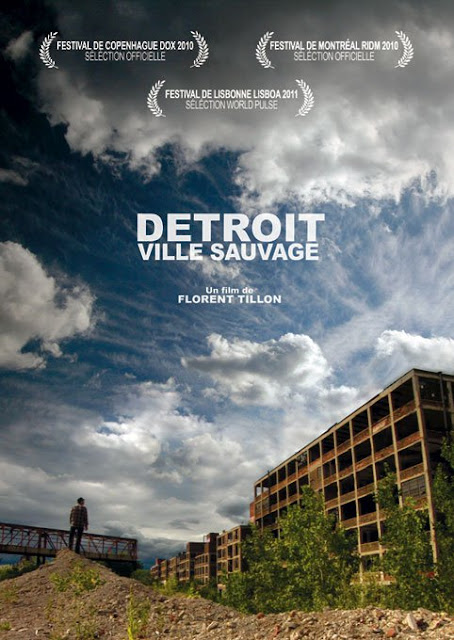My Cultural Landscape: One of the stranger and more eerily disturbing documentaries seen at this year’s San Francisco International Film Festival was Detroit Wild City. Written and directed by Florent Tillon, the film features some wonderful archival footage in addition to battered landscapes and local interviews recorded by the French filmmaker during his visits to Detroit in 2008 and 2009.
 |
| Poster art for Detroit Wild City |
Formerly hailed as “the Paris of the Midwest,” Detroit’s heyday as the home of the American automobile industry has long since come and gone. During the 1980s, while spending Hell Night (the night before Halloween) at the Dearborn Inn, I turned on the local news and learned that only 80 homes were on fire. Since then, the number of abandoned properties (industrial as well as residential) that lie in ruin has increased substantially.
In the past 25 years, Detroit’s woes have similarly increased as manufacturers have fled the area, poverty has risen, and Michigan’s political landscape has become more polarized. While it would seem that conditions on the ground have nowhere to go but up, optimism is easier to imagine than to find.
 |
| An abandoned home in Detroit (Photo by: Yves Marchand and Romain Meffre) |
Two French photographers (Yves Marchand and Romain Meffre) have posted an online gallery of poignant photos from their book entitled The Ruins of Detroit. And yet, where Marchand and Meffre smell death and decay, Tillon senses a resurgence of life and opportunity thanks to a small group of artists, squatters, and organic farmers he encountered who are trying to eke out a living in Detroit.
It’s an extremely idealistic and uphill battle. According to estimates by The National Institute for Literacy, roughly 47 percent of adults in Detroit — 200,000 total — are “functionally illiterate” (meaning that they have trouble with reading, speaking, writing and computational skills). Even more surprisingly, the Detroit Regional Workforce notes that only half of that illiterate population has obtained a high school degree.
While I found Tillon’s documentary to be both fascinating and depressing, it was obvious that the filmmaker had a critical blind spot: there was no mention of Detroit’s bitter — and often brutal — winters (which would hardly favor organic farming).